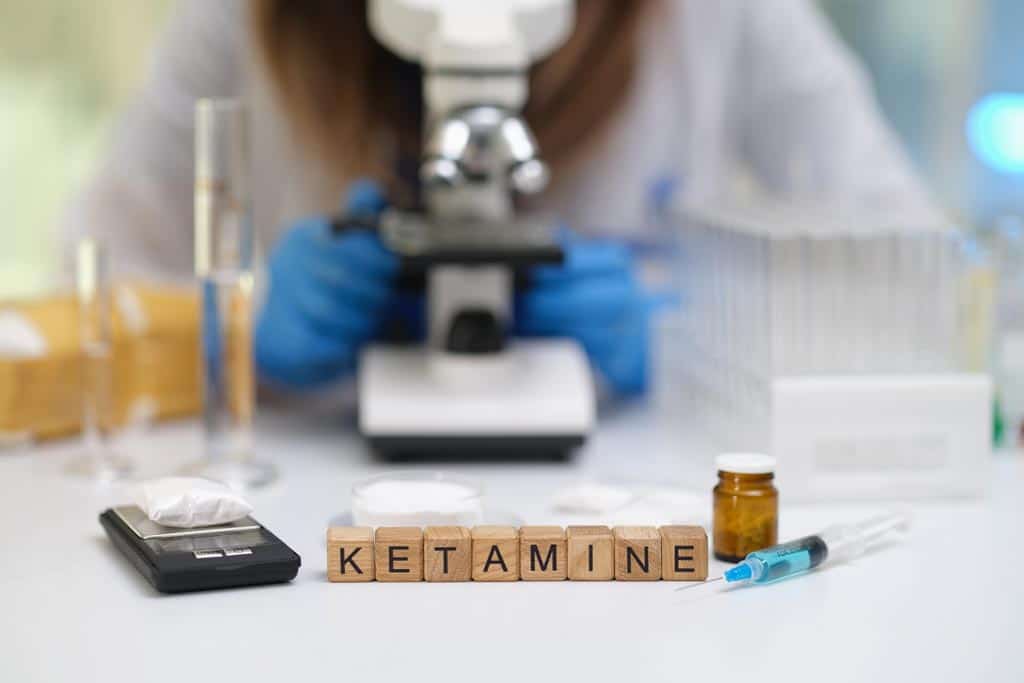3 min read
The History of Ketamine & Its Promise to the Future of Medicine
SM : Mar 11, 2025 9:32:30 AM

- Ketamine began as a safer anesthetic in 1962, gaining FDA approval in 1970.
- It transitioned from widespread medical use to recreational use, leading to stricter regulations.
- Low doses given intravenously (IV) have shows promise for treatment-resistant depression, PTSD, anxiety, other mental health disorders, and chronic pain.
- Ketamine can rapidly rewire the brain, promote neurogenesis, and offer rapid relief for mood disorder and pain patients.
- Future research focuses on personalized treatments, new delivery methods, and its use in psychedelic therapy.
The history of ketamine is a fascinating journey that spans decades, from its early days as just an anesthetic to its modern role in mental health treatment and more. Originally developed as a safer alternative to existing anesthetics, it quickly became the go-to drug for surgery and emergency medicine. Over time, its use expanded, but so did concerns about its dissociative effects and recreational misuse.
Today, ketamine is a significant focus in scientific and medical worlds, with researchers exploring its potential to treat depression, anxiety, PTSD, other mental health conditions, and chronic pain. Looking back at how it all started gives us a better understanding of where ketamine currently stands in healthcare, where it is headed, and why it is so promising.
The Origins of Ketamine
When Was Ketamine Invented?
Ketamine was first developed in 1962 by Dr. Calvin Stevens, a chemist working for Parke-Davis.
At the time, researchers were looking for a safer alternative to phencyclidine (PCP), which worked well as an anesthetic but caused intense hallucinations and long-lasting side effects. Ketamine turned out to be the solution—it provided reliable anesthesia and wore off quickly, making it much safer for medical use.
After early testing, ketamine was approved by the FDA in 1970 as a general anesthetic. Its fast-acting nature and strong safety profile made it a go-to option for surgeries and emergency procedures, both in hospitals and on the battlefield.
Where Does Ketamine Come From?
Ketamine is a fully synthetic drug, designed in a lab as a safer anesthetic alternative. Unlike opioids from poppies or penicillin from mold, ketamine was originally used for medical use.
Its ability to provide anesthesia without slowing breathing made it valuable in critical care, especially during the Vietnam War, where it was widely used to treat injured soldiers. This early use helped shape ketamine’s lasting role in medicine.
Ketamine’s Shifting Role Over the Decades
Ketamine History in the 70’s and 80’s
After its FDA approval in 1970, ketamine became widely used for surgery, emergency care, and veterinary medicine due to its ability to provide anesthesia without suppressing breathing.
However, reports of its dissociative effects—hallucinations and altered perceptions—led to growing interest outside medical settings.
By the late 1970s, ketamine was used in underground psychedelic therapy, with some researchers exploring its mental health potential while others warned of its hallucinogenic risks. As non-medical use increased, various countries imposed tighter regulations.
Ketamine in the 90’s
During the 1990s, ketamine became a popular party drug, known as “Special K,” for its dissociative and euphoric effects. This surge in recreational use led to stricter legal controls, making medical access and research more challenging.
Despite this, scientists continued studying ketamine’s potential beyond anesthesia, particularly for depression and chronic pain.
The Modern Revival of Ketamine in Medicine

After decades of use primarily as an anesthetic, ketamine reemerged in the 2000s as a groundbreaking treatment for mental health conditions.
Researchers discovered that low doses could rapidly relieve symptoms of severe depression, even in patients who hadn’t responded to traditional treatments. Unlike standard antidepressants, which can take weeks to work, ketamine’s effects were often noticeable within hours.
This breakthrough led to increased clinical studies and, in 2019, the FDA approved esketamine—a ketamine-derived nasal spray—for treatment-resistant depression. With this approval, ketamine clinics began to open, offering intravenous (IV) infusions for various mental health conditions, including depression, anxiety, PTSD, and others.
Breakthroughs in Mental Health Treatment
Ketamine helps the brain rewire itself, something traditional antidepressants don’t do in the same way or nearly as quickly. By boosting glutamate production, it supports new neural connections, which may explain its fast and lasting effects on mood disorders.
Researchers are also looking into its potential for bipolar disorder, OCD, and substance use disorders. Some studies even suggest it can reduce suicidal thoughts within hours, making it a promising option for crisis intervention.
With growing acceptance, ketamine is shifting from a once-controversial anesthetic to a breakthrough mental health treatment, offering new hope for those who haven’t found relief with traditional therapies.
The Future of Ketamine in Medicine
Personalized Treatments & New Delivery Methods
One of the biggest areas of focus is refining ketamine treatments for individual patients. Researchers are working to better understand the ideal dosages, treatment schedules, and long-term effects.
Advances in drug formulations could lead to more accessible options beyond IV infusions, such as oral tablets, making treatment easier and more affordable.
Ketamine in Psychedelic Therapy
As the medical field continues to embrace psychedelic-assisted therapy, ketamine stands out among substances like psilocybin and MDMA as the only FDA-approved psychedelic medicine with more than 50 years of safety and efficacy data. Ketamine has played and continues to play a critical role in the future of mental health care.
Looking Ahead
While ketamine still faces regulatory and accessibility challenges, its growing acceptance in medicine signals a promising future.
As research expands and treatment options improve, ketamine may become an even more effective and widely used tool for mental health and pain management.
A Promising Future in Medicine
Ketamine has come a long way from its origins as an anesthetic in the 1960s. Its journey—from battlefield medicine to club drug to groundbreaking mental health treatment—highlights its unique and evolving role in medicine.
Today, ketamine is offering new hope for people struggling with treatment-resistant depression, anxiety, PTSD, and other mental health conditions. As research continues, its potential in personalized medicine and psychedelic-assisted therapy is reshaping the future of mental health care.
If you’re curious about the benefits of intravenous ketamine treatment, Ketamine Clinics Los Angeles provides world-renowned expertise and compassionate care.
Learn more about how ketamine could help improve mental health and well-being today.
American Psychiatric Association studies say Ketamine can Treat Depression
Ketamine has been recognized and used as an anesthetic for decades. But in recent years, wider therapeutic uses of ketamine have emerged to address a...

Real Results: Why Patients Choose Ketamine Clinics Los Angeles
Choosing the right mental health treatment can feel overwhelming, but at Ketamine Clinics Los Angeles (KCLA), we’re here to make that decision...


